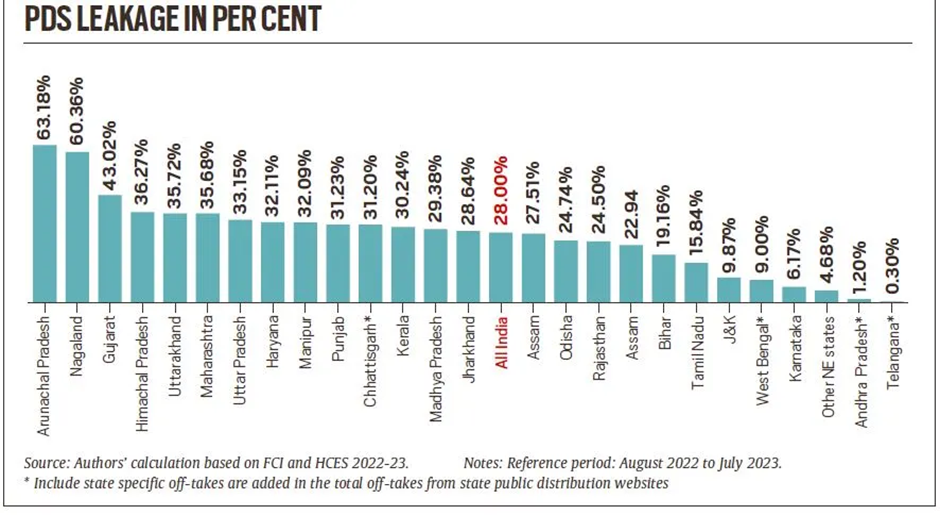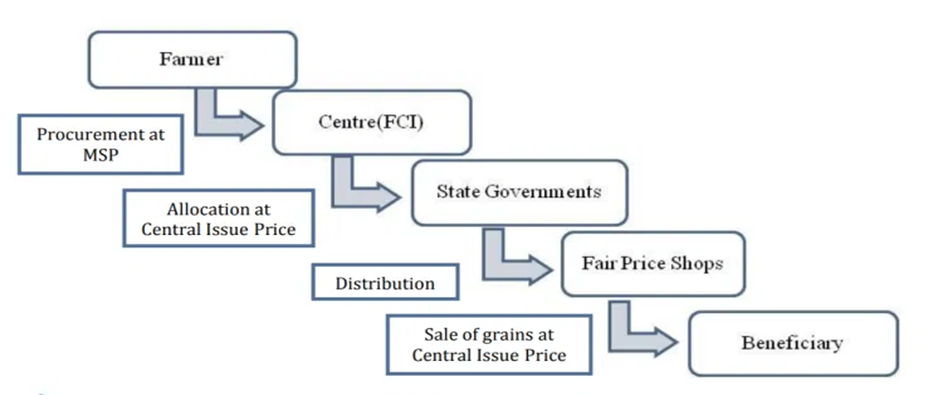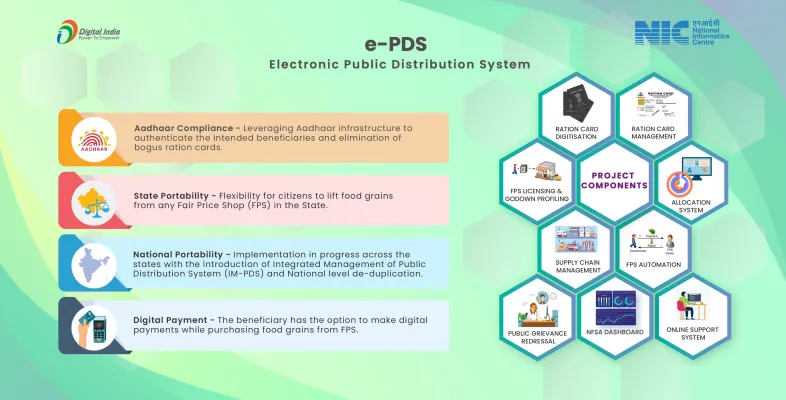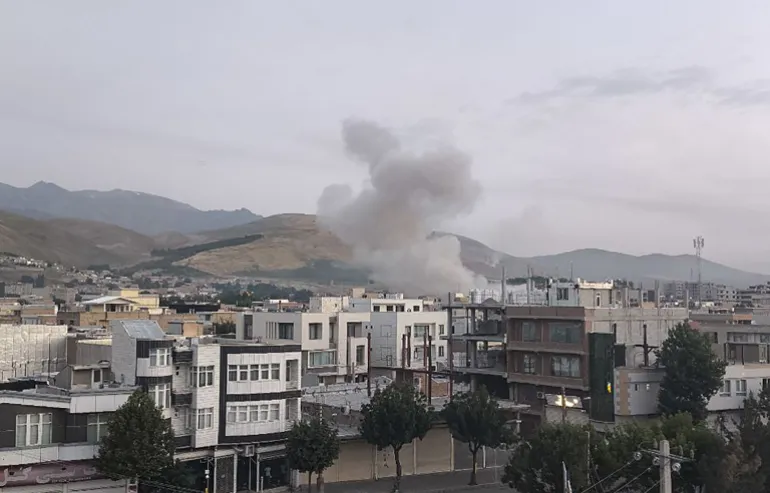- Courses
- GS Full Course 1 Year
- GS Full Course 2 Year
- GS Full Course 3 Year
- GS Full Course Till Selection
- Answer Alpha: Mains 2025 Mentorship
- MEP (Mains Enrichment Programme) Data, Facts
- Essay Target – 150+ Marks
- Online Program
- GS Recorded Course
- Polity
- Geography
- Economy
- Ancient, Medieval and Art & Culture AMAC
- Modern India, Post Independence & World History
- Environment
- Governance
- Science & Technology
- International Relations and Internal Security
- Disaster Management
- Ethics
- Current Affairs
- Indian Society and Social Issue
- NCERT- Science and Technology
- NCERT - Geography
- NCERT - Ancient History
- NCERT- World History
- CSAT
- 5 LAYERED ARJUNA Mentorship
- Public Administration Optional
- ABOUT US
- OUR TOPPERS
- TEST SERIES
- FREE STUDY MATERIAL
- VIDEOS
- CONTACT US
Public Distribution System (PDS) Must Be Reformed to Fix Leakage and Invest in Farming
Public Distribution System (PDS) Must Be Reformed to Fix Leakage and Invest in Farming
12-11-2024

- The Public Distribution System (PDS) has been a key pillar of food security in India.
- However, it faces significant issues like leakages, mis-targeting, and inefficiency, which reduce its effectiveness in addressing poverty and nutritional security.
- These issues divert resources that could otherwise be used for agriculture development and nutritional improvement.
- PDS (started in the 1960s) is a government-run initiative offering subsidized food (rice, wheat, sugar, kerosene, cooking oil) to underprivileged populations.
Coverage of Free Food Subsidies
- 57% of the population currently benefits from free food under the Pradhan Mantri Garib Kalyan Anna Yojana (PMGKAY).
- The Pradhan Mantri Garib Kalyan Anna Yojana (PMGKAY) is a scheme that provides free food grains to the poor in India:
- The scheme was announced in March 2020 in response to the economic disruptions caused by the COVID-19 pandemic.
- The scheme provides 5 kg of free food grains per month to eligible households, in addition to the subsidized ration provided under the National Food Security Act (NFSA).
- This extensive coverage raises questions about the efficiency of subsidies.
- Rs 2.7 lakh crore is allocated as food subsidies for FY 2023, a huge portion of which could be used for more impactful investments such as agricultural research, skill development, and rural infrastructure.
Key Issue:- Is it necessary to extend free food to 57% of the population, especially when poverty levels have declined significantly?
- The NITI Aayog report (2024) states that 248 million people have come out of poverty between 2013-2023, leading to a decline in the Multidimensional Poverty Index (MDPI) from 29.17% to 11.28%.
- Proposal:
- Target only the poorest 15% of the population for free food.
- Those above the extreme poverty line (Antyodaya) should pay at least half of the Minimum Support Price (MSP), as was done under the Targeted PDS initiated by Atal Bihari Vajpayee in 1997-98.
- This would reduce the subsidy burden and free up funds for agricultural investment.
Leakage in the PDS
- One of the most significant issues with the PDS is the leakage of food grains.
- According to the latest data from the Household Consumption Expenditure Survey (HCES) (2022-2023), about 28% of the allocated grains under PDS never reach the intended beneficiaries.
Key Findings:
-
28% leakage means 19.69 million metric tonnes (MMT) of rice and wheat (worth approximately Rs 69,108 crore) fail to reach the intended beneficiaries annually.
Data on PDS Leakages:- The economic cost of the grains is calculated based on what the Food Corporation of India (FCI) spends on acquiring and storing grains.
- Leakages are a major waste of public funds and contribute to inefficiencies in food distribution.
-
Past Reports on Leakages:
- A 2015 report by the High-Powered Committee on Grain Management under Shanta Kumar estimated PDS leakages to be around 46%, based on the HCES 2011-12.
- This figure has reduced, but the current leakage rate of 28% is still high.
-
Technological Interventions:
- The government introduced Point-of-Sale (PoS) machines at Fair Price Shops (FPS) in 2016 to reduce leakages by integrating biometric authentication and real-time transaction tracking.
- Point-of-Sale (PoS) machines, also known as Electronic Point of Sale (ePoS) devices, are used at Fair Price Shops (FPS) to electronically record the distribution of subsidized food grains to beneficiaries
- Currently, 90% of FPS nationwide have PoS machines, which have helped bring down leakages from 46% to 28%.
- The government introduced Point-of-Sale (PoS) machines at Fair Price Shops (FPS) in 2016 to reduce leakages by integrating biometric authentication and real-time transaction tracking.
-
State-wise Variations:
- Arunachal Pradesh, Nagaland, and Gujarat report the highest leakages, although the national average stands at 28%.
- Proposal:
- Direct cash transfers to beneficiaries could eliminate these leakages, as the food subsidy would go directly to the bank accounts of the poor, ensuring that the money is used for food without intermediary losses.
Nutritional Security: Beyond Free Rice and Wheat
- While the PDS offers rice and wheat, it does not address the issue of nutritional security, which is particularly critical for children under the age of 5.
- The National Family Health Survey (2019-21) shows that 35.5% of children are stunted, 19.3% are wasted, and 32.1% are underweight.
- These indicators suggest that hidden hunger (micronutrient deficiencies) is a major issue in India.
- Proposal:
- Transform Fair Price Shops into nutrition hubs: FPS could offer a diversified range of food, including eggs, pulses, millets, fruits, and vegetables, alongside cereals.
- Digital food coupons could be issued to beneficiaries to redeem these at nutrition hubs, providing a variety of healthy options and addressing the diversity of nutritional needs.
Proposed Reforms for the Public Distribution System (PDS)
- Narrow the coverage to focus primarily on the extremely poor.
- This would reduce the food subsidy burden and direct resources toward investing in agriculture and rural development.
- Charge those above the poverty line at least half the MSP, as was done under Targeted PDS in 1997-98.
- This would also encourage self-sufficiency in food distribution.
- Given the persistent leakages in PDS, direct cash transfers could be a better alternative to ensure that the poor receive their entitlement directly.
- This would eliminate middlemen and inefficiencies, and ensure that subsidies are spent in the best interest of the beneficiaries.
- PDS outlets should be converted into nutrition hubs offering a wider array of nutritious food options like pulses, millets, eggs, fruits, and vegetables.
- Implementing a digital food coupon system will allow beneficiaries to redeem these coupons for a variety of foods, improving overall nutritional diversity and tackling hidden hunger.
- The savings from streamlining the PDS can be reinvested in developing climate-resilient agricultural systems, improving irrigation and post-harvest infrastructure, and providing skills training to farmers.
- Rural infrastructure improvements, such as rural roads, storage facilities, and market linkages, will boost agricultural productivity and create job opportunities in rural areas.
What is Public Distribution System (PDS) in India
Evolution of PDS:
How PDS Works:
Role of FCI:
Steps Taken to Improve Public Distribution System (PDS)
1. End-to-End Computerization of PDS
2. Integrated Management of Public Distribution System (IM-PDS)
3. Integration of PDS with Aadhaar
4. Ration Card Deletion
5. Promotion of Self-Help Groups
|
Must Check: Best IAS Coaching In Delhi
UPSC Prelims Result 2024 Out: Expected Cut Off & Other Details, UPSC Prelims 2024 Answer with Explanation, Daily Prelims Quiz, Daily Current Affairs, MONTHLY CURRENT AFFAIRS TOTAL (CAT) MAGAZINE, Best IAS Coaching Institute in Karol Bagh, Best IAS Coaching Institute in Delhi, Daily Mains Question Answer Practice, ENSURE IAS UPSC Toppers, UPSC Toppers Marksheet, Previous Year Interview Questions, UPSC Syllabus






